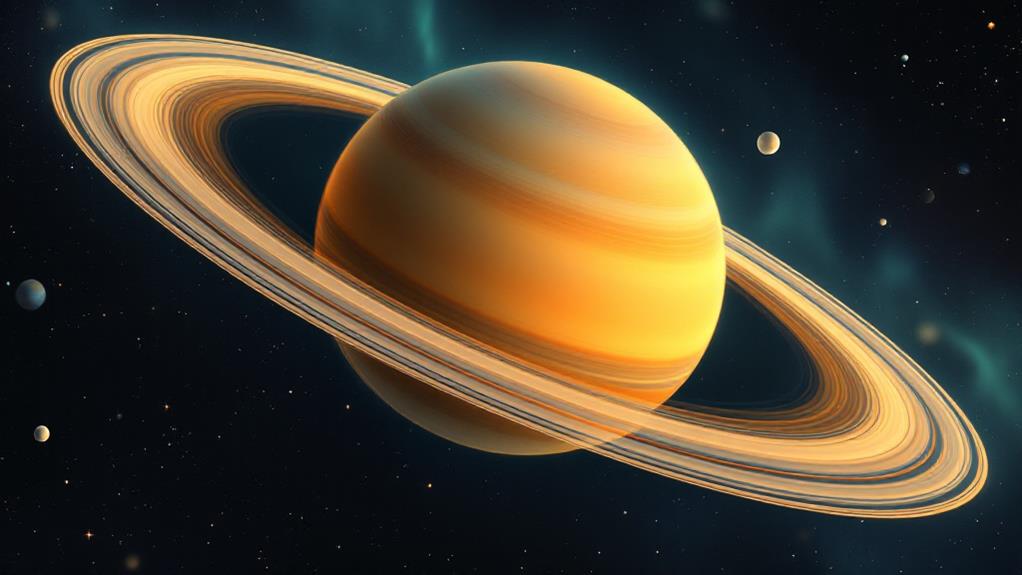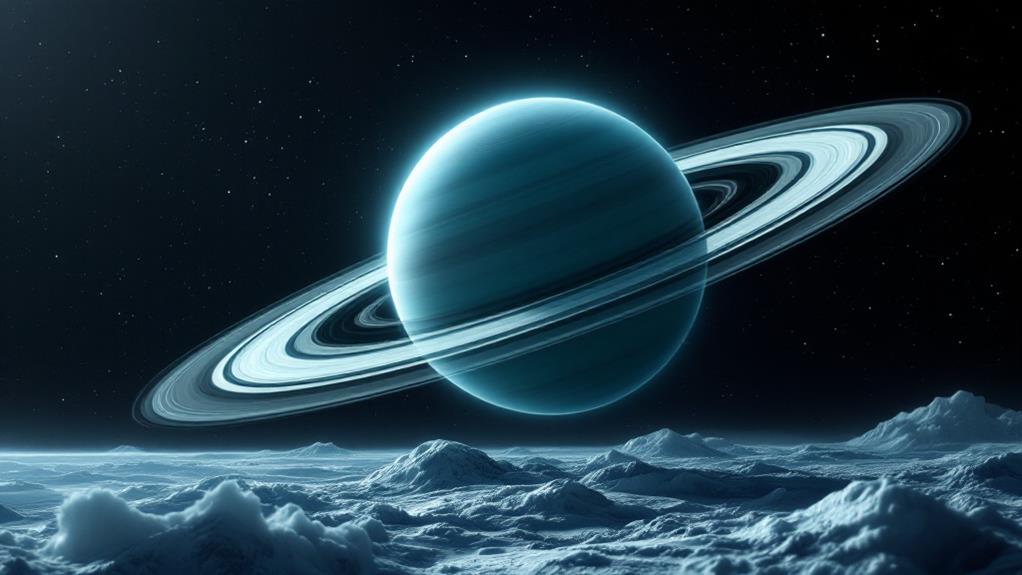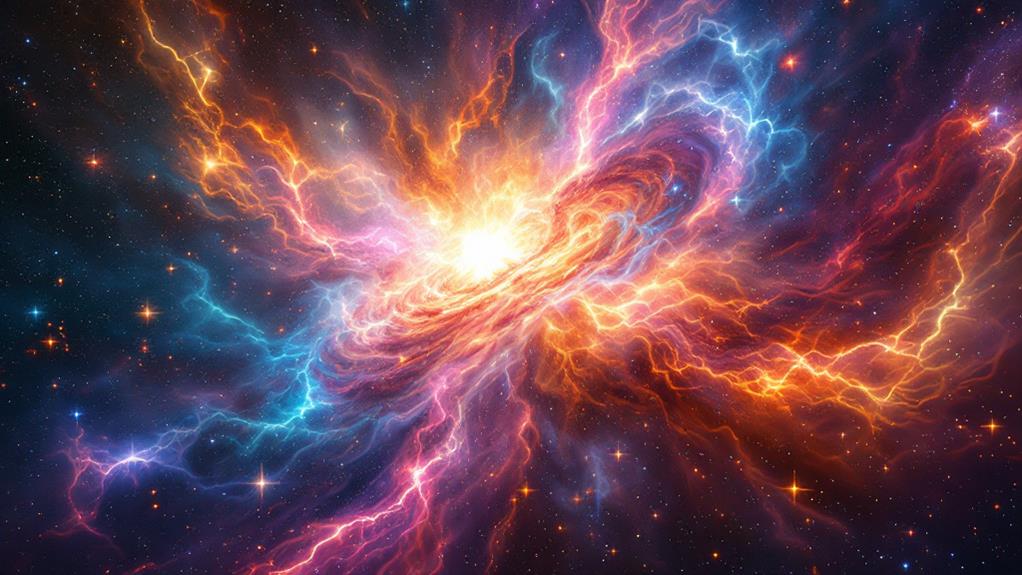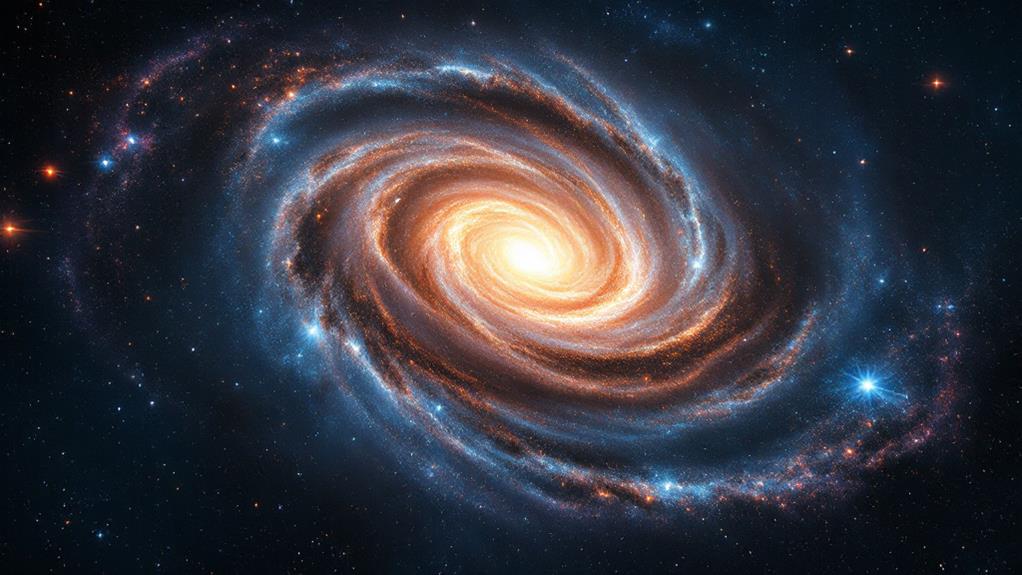Interesting Facts About Jupiter: The Largest Planet in Our Solar System
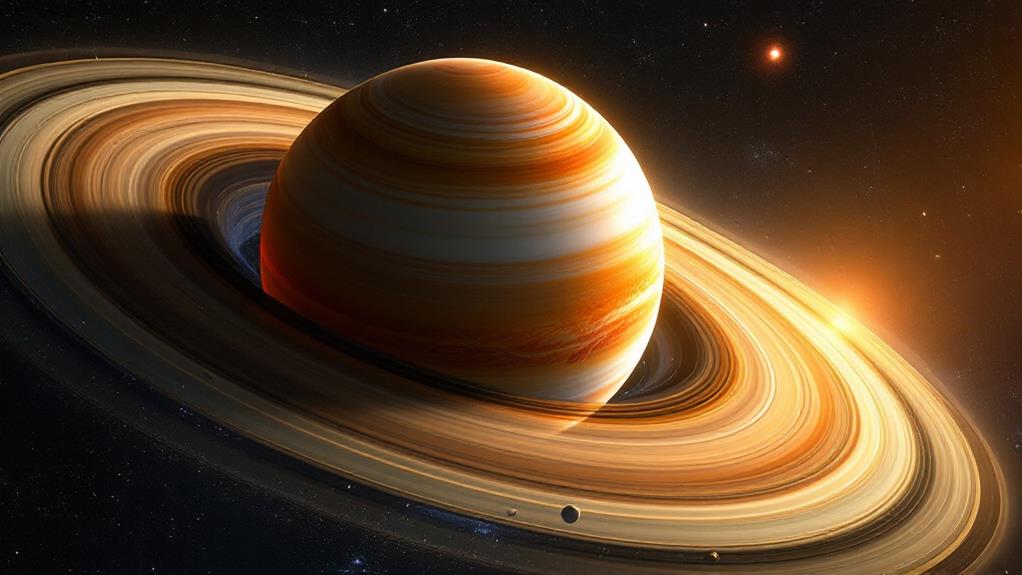
Jupiter, the solar system's largest planet, is a fascinating giant. You'd be amazed to know it's nearly 11 times Earth's diameter and could fit over 1,300 Earths inside. Its Great Red Spot, a massive storm larger than Earth, has raged for centuries. Jupiter's powerful magnetic field is 20,000 times stronger than Earth's, creating stunning auroras. With 79 known moons, including the volcanic Io and icy Europa, Jupiter's influence shapes our cosmic neighborhood. It rotates faster than any other planet, completing a day in just 10 hours. These incredible facts only scratch the surface of Jupiter's wonders.
Jupiter's Massive Size
At nearly 11 times Earth's diameter, Jupiter's massive size dominates our solar system. You'd need to line up about 1,300 Earths side by side to match Jupiter's colossal size. This gas giant's immense scale is so vast that it accounts for more than two-thirds of all planetary mass orbiting our Sun.
Jupiter's enormous volume could contain over 1,300 Earths, yet it's not as dense as our home planet. Its composition of primarily hydrogen and helium gives it a relatively low density for its size. Despite this, Jupiter's immense scale still results in a mass 318 times that of Earth.
The planet's rapid rotation, completing a day in just under 10 hours, causes it to bulge at the equator. This effect is so pronounced that Jupiter's equatorial radius is about 4,600 kilometers larger than its polar radius. You'd notice this flattened appearance even through a small telescope.
Jupiter's size isn't just impressive; it's fundamental to our solar system's operations. Its massive gravitational pull helps shield inner planets from potential impacts and influences the orbits of countless smaller bodies.
The Great Red Spot
Jupiter's colossal size isn't its only claim to fame. The planet also boasts one of the most iconic features in our solar system: the Great Red Spot. This massive storm has been raging for centuries, captivating astronomers and space enthusiasts alike.
You'll find Jupiter's Great Red Spot in the planet's southern hemisphere, where it's been swirling since at least the 1600s. This colossal anticyclone spans an area larger than Earth itself, with winds reaching speeds of up to 400 mph. Despite its longevity, the Great Red Spot's mysterious nature continues to puzzle scientists.
Recent observations have shown that the storm is shrinking, but don't worry – it's still an impressive sight. The spot's reddish hue is believed to come from complex organic molecules, phosphorus, or sulfur compounds rising from Jupiter's deeper layers. As you investigate the wonders of our solar system, remember that this giant, persistent storm serves as a manifestation to the shifting and ever-evolving nature of planetary atmospheres, making Jupiter an endless source of fascination for researchers and stargazers worldwide.
Jupiter's Powerful Magnetic Field

A colossus in more ways than one, Jupiter doesn't just impress with its size and storms. Its magnetic field is another awe-inspiring feature that sets it apart from other planets in our solar system. Jupiter's magnetic field strength is incredibly powerful, measuring about 20,000 times stronger than Earth's.
This colossal magnetic field extends millions of kilometers into space, creating a magnetosphere so vast that it would appear larger than the full moon if visible from Earth. Jupiter's magnetic field influence reaches far beyond its own moons, affecting the entire Jovian system and even interacting with the solar wind.
The intense magnetic field is generated by the planet's rapidly rotating metallic hydrogen core, which acts like a giant dynamo. This field protects Jupiter from harmful solar radiation and creates stunning auroras at its poles. It also traps charged particles, forming radiation belts that can be dangerous to spacecraft. Scientists continue to study Jupiter's magnetic field to better understand planetary magnetism and its effects on space weather throughout our solar system.
Composition of Jupiter's Atmosphere
Complexity defines Jupiter's atmospheric composition, a swirling mix of gases and elements that create its distinctive appearance. The planet's atmosphere is primarily composed of hydrogen and helium, much like the Sun. These two elements make up about 99% of Jupiter's atmosphere, with hydrogen accounting for roughly 90% and helium for 9%.
The remaining 1% consists of trace amounts of other elements and compounds, including methane, ammonia, and water vapor. These components contribute to Jupiter's cloud composition, forming its iconic bands and swirls. As you descend through Jupiter's atmosphere, you'll encounter increasing atmospheric pressure and changing conditions.
The uppermost layer, visible from Earth, is made up of ammonia ice clouds. Beneath this, you'll find a layer of ammonium hydrosulfide clouds, followed by water ice and liquid water clouds. deeper still, hydrogen becomes increasingly pressurized, eventually shifting into a liquid metallic state. This unique atmospheric structure gives Jupiter its distinct appearance and plays an essential role in the planet's weather patterns and storm systems, including the famous Great Red Spot.
Jupiter's Impressive Moon System

Orbiting around the gas giant, Jupiter's impressive moon system stands out as one of the most fascinating in our solar system. With 79 known moons, Jupiter boasts the largest collection of satellites among all the planets. You'll find that Jupiter's diverse moons range from tiny irregular bodies to massive worlds larger than Mercury.
The four largest moons, known as the Galilean moons, are particularly enthralling. Io, Europa, Ganymede, and Callisto each possess unique characteristics that make them stand out. Io is the most volcanically active body in the solar system, while Europa's icy surface conceals a potentially habitable subsurface ocean. Ganymede, the largest moon in our solar system, has its own magnetic field, and Callisto's heavily cratered surface provides perspective into the early solar system.
Jupiter's unique moons also include smaller, irregular satellites with retrograde orbits, suggesting they may be captured asteroids. As you investigate Jupiter's moon system, you'll uncover a miniature solar system within our own, offering a wealth of scientific opportunities and potential for future exploration.
Jupiter's Faint Ring System
While Jupiter's moons steal much of the spotlight, the planet also harbors a subtle yet intriguing ring system. Unlike Saturn's prominent rings, Jupiter's are faint and difficult to observe from Earth. These delicate structures were first uncovered in 1979 by NASA's Voyager 1 spacecraft.
Jupiter's complex ring composition consists of three main components:
- The halo: A thick, toroidal cloud of particles
- The main ring: The brightest and densest part
- The gossamer rings: Two fainter, outer rings
The rings are made up of tiny dust particles, likely ejected from Jupiter's moons by meteoroid impacts. These unique ring particle properties contribute to the system's faintness. The particles are incredibly small, ranging from microscopic dust to objects about the size of a grain of sand.
You'll find that Jupiter's rings extend from about 92,000 km to 226,000 km above the planet's cloud tops. Despite their vast size, they're so thin and tenuous that they're nearly invisible when viewed edge-on. Scientists continue to study these enigmatic structures to better understand their formation, composition, and fluid-like behavior within Jupiter's complex system.
Jupiter's Rapid Rotation

Jupiter spins on its axis at an astonishing rate, completing a full rotation in just under 10 hours. This rapid rotation is a pivotal factor in shaping the planet's unique features and weather patterns. As the fastest rotating planet in our solar system, Jupiter's quick spin creates powerful forces that influence its atmosphere and internal structure.
The planet's rapid rotation contributes to the formation of its distinctive bands and zones. You'll notice these colorful stripes when observing Jupiter through a telescope. These bands are actually rapid winds moving in opposite directions, with speeds reaching up to 335 miles per hour (539 km/h) at the equator.
Jupiter's fast spin also affects its shape, causing it to bulge at the equator and flatten at the poles. This oblate spheroid shape is more pronounced than on any other planet in our solar system. The rapid rotation also plays an indispensable role in generating Jupiter's powerful magnetic field and contributes to internal heating. As the planet spins, it creates friction and turbulence within its liquid metallic hydrogen layer, which helps maintain its high internal temperature despite being so far from the Sun.
Exploring Jupiter's Auroras
Brilliance illuminates Jupiter's poles in the form of stunning auroras, rivaling those seen on Earth. These celestial light shows are a result of Jupiter's intense magnetic field interacting with charged particles from the sun and its moon Io. You'll find that Jupiter's auroras are hundreds of times more powerful than Earth's, with complex plasma dynamics driving their formation.
Unlike Earth's auroras, Jupiter's are permanent features, constantly swirling and changing. Scientists study these phenomena using various instruments, including the Hubble Space Telescope and NASA's Juno spacecraft. Infrared emissions from Jupiter's auroras provide perceptive information into the planet's upper atmosphere and magnetosphere.
Intense blue swirls of light dancing across the poles, massive curtains of green and red extending thousands of kilometers, pulsating X-ray hotspots near the north pole, ultraviolet auroral "footprints" from Jupiter's moons, and rapid fluctuations in brightness and shape over minutes or hours.
These awe-inspiring displays continue to fascinate scientists, offering clues about Jupiter's complex magnetic environment and its interactions with the solar wind and its moons.
Jupiter's Role in Solar System

The gravitational giant of our solar system, Jupiter plays an essential role in shaping the active dynamics of the planets and other celestial bodies around it. Jupiter's gravitational influence is so powerful that it affects the orbits of other planets, asteroids, and comets. It acts as a cosmic shield, deflecting many potentially harmful objects away from Earth and the inner planets.
You'll find that Jupiter's role in climate extends beyond its own atmosphere. Its massive size and gravitational pull can influence long-term climate patterns on Earth and other planets. Scientists believe that Jupiter's orbit may have contributed to past ice ages on our planet.
Jupiter's moons also benefit from its gravitational influence. The gas giant's tidal forces help maintain the subsurface oceans on moons like Europa and Ganymede, potentially creating environments suitable for life. Additionally, Jupiter's magnetosphere interacts with its moons, causing unique phenomena such as Io's intense volcanic activity.
When you consider Jupiter's impact on the solar system, you'll realize it's not just a distant planet, but a vital component in maintaining the delicate balance of our cosmic neighborhood.
